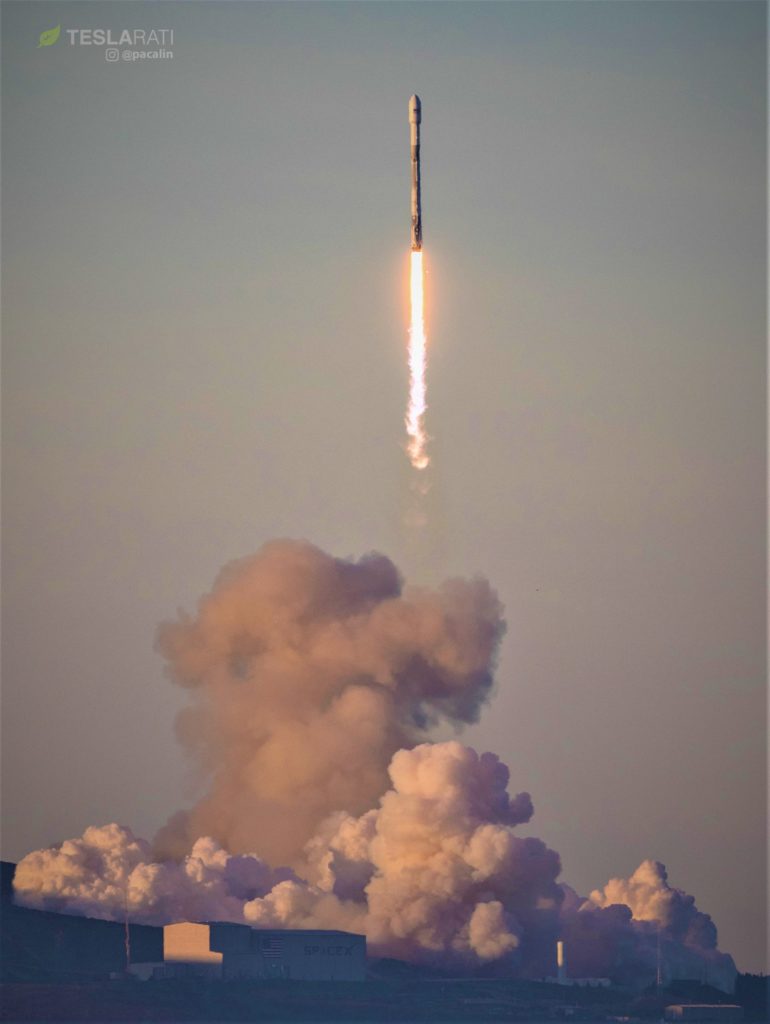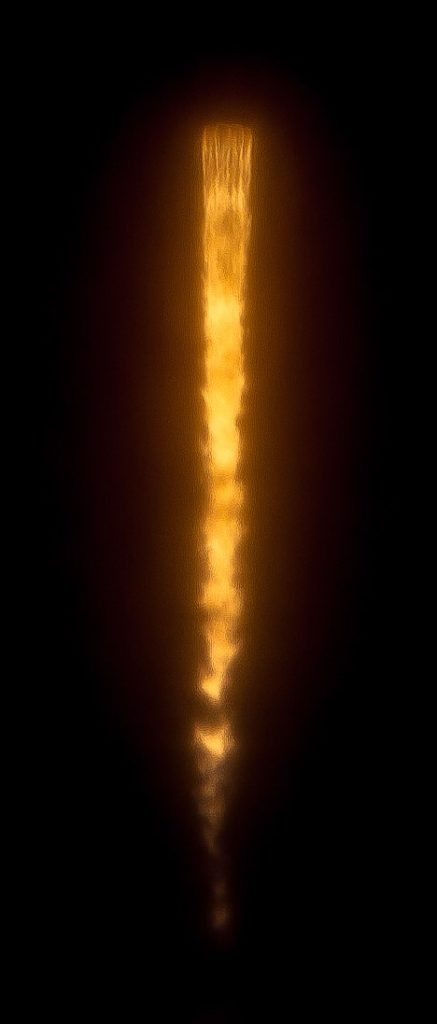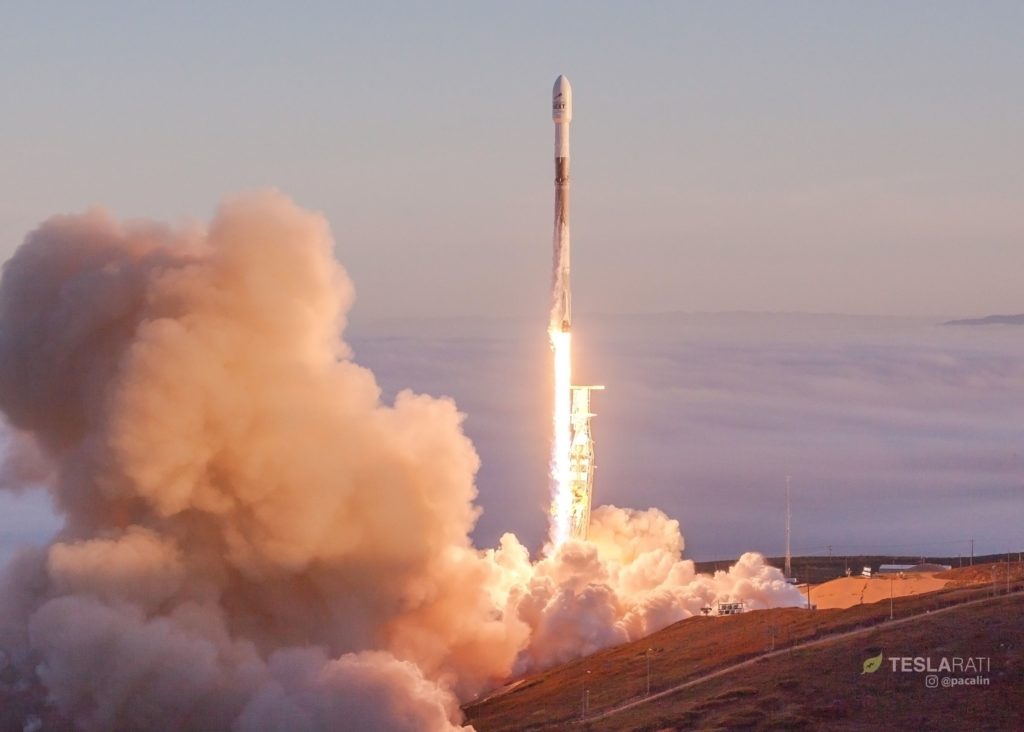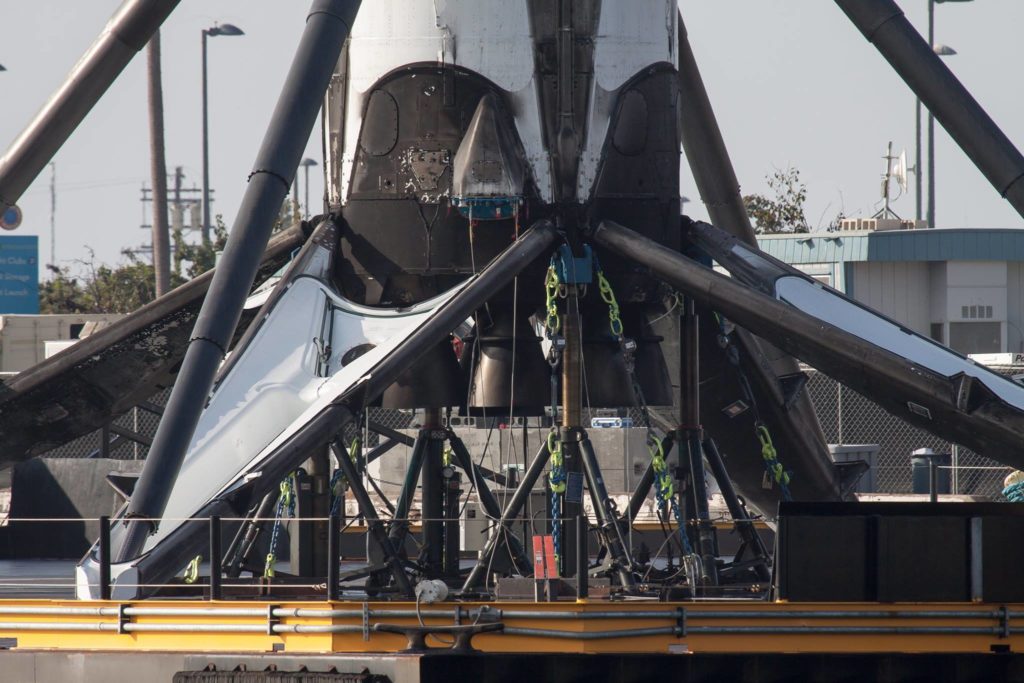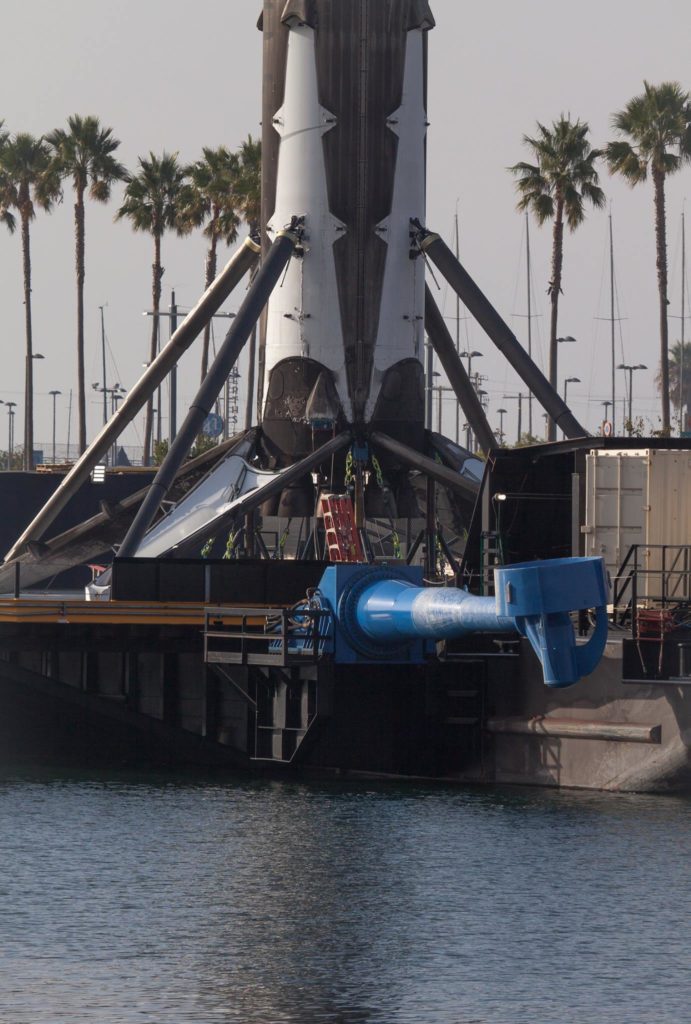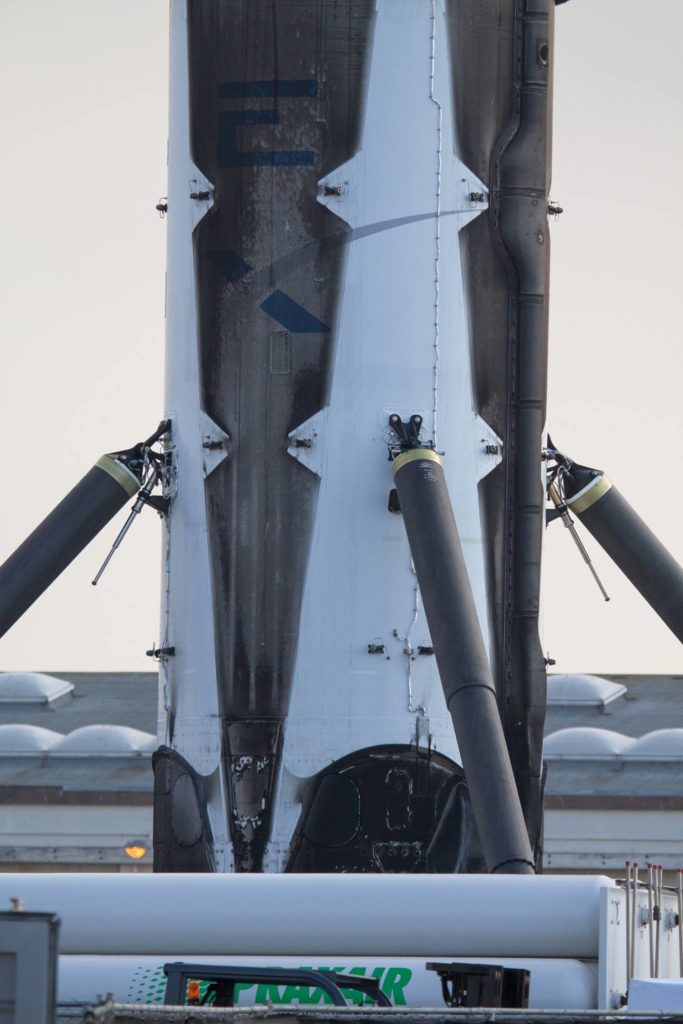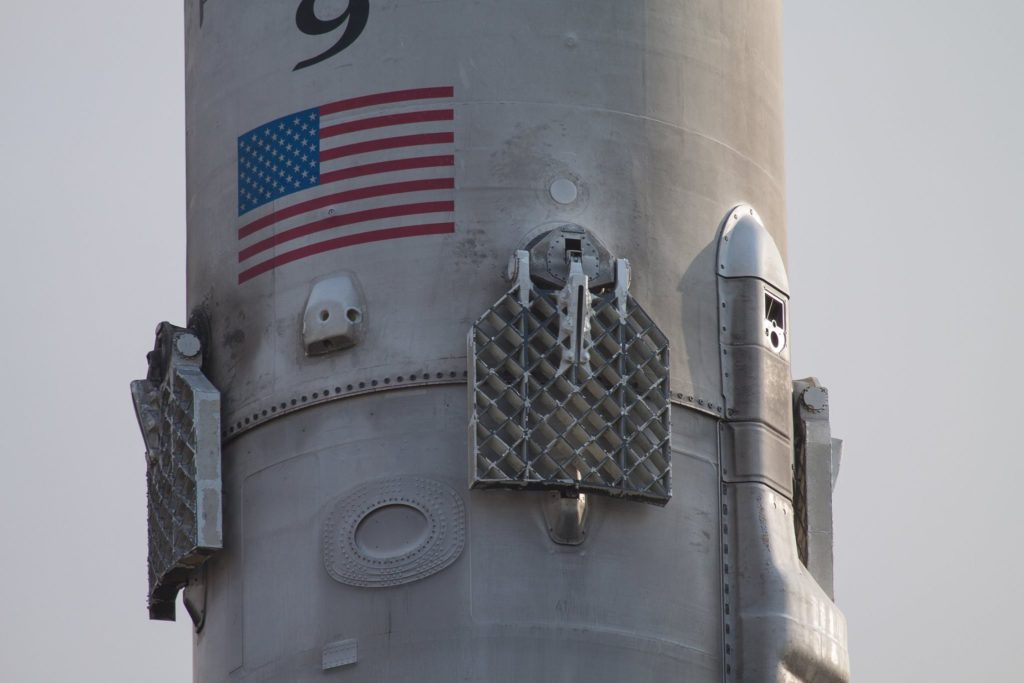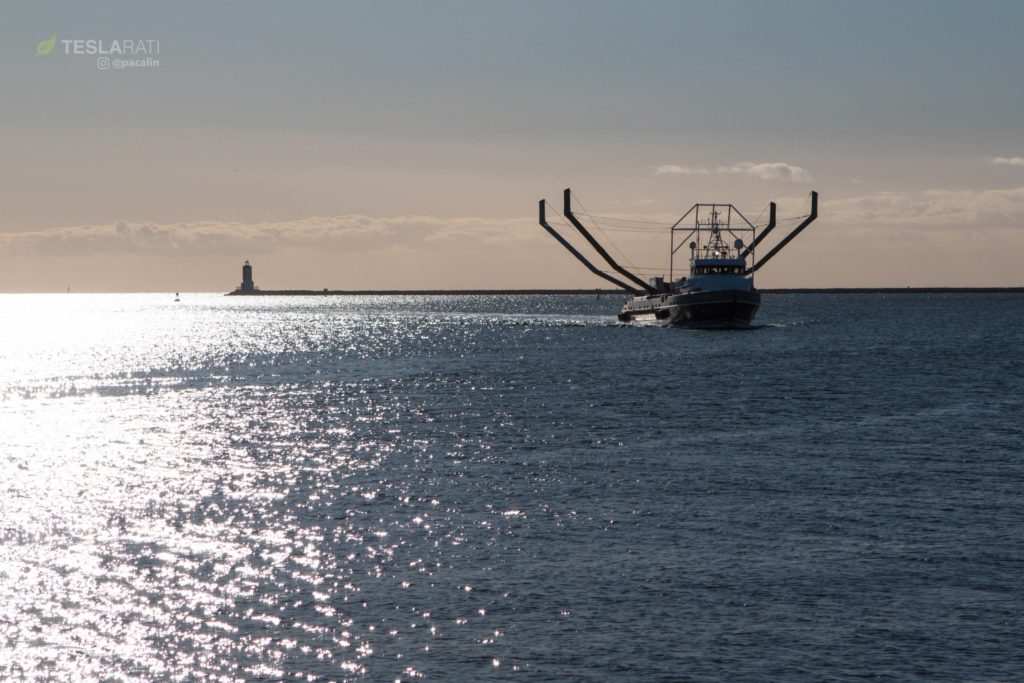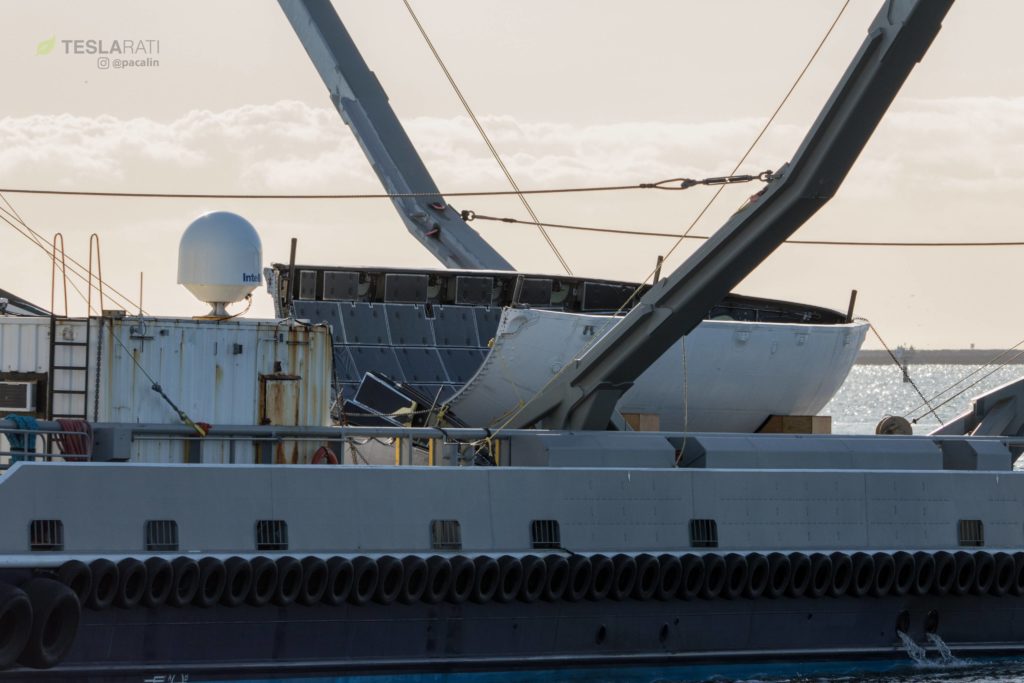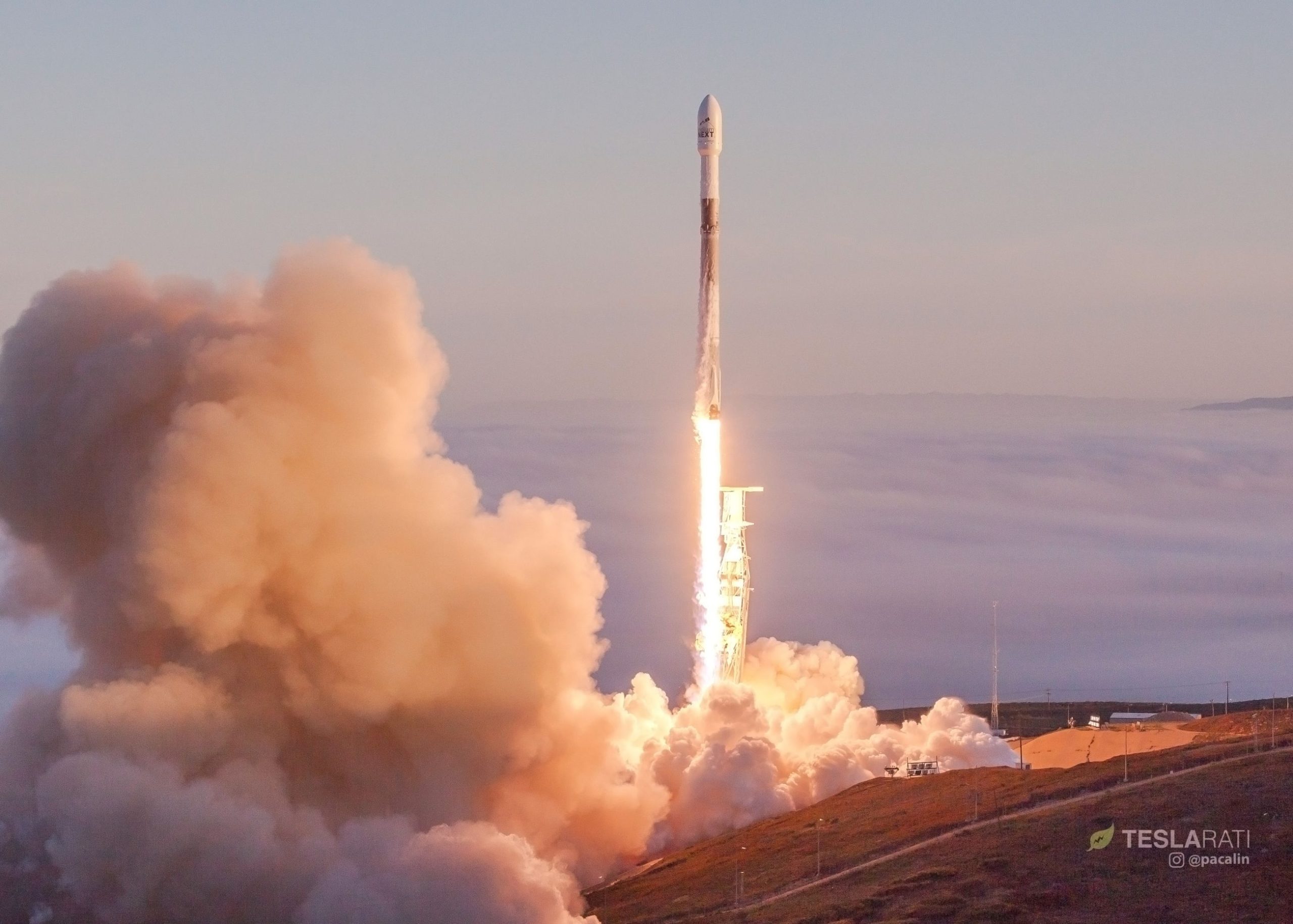
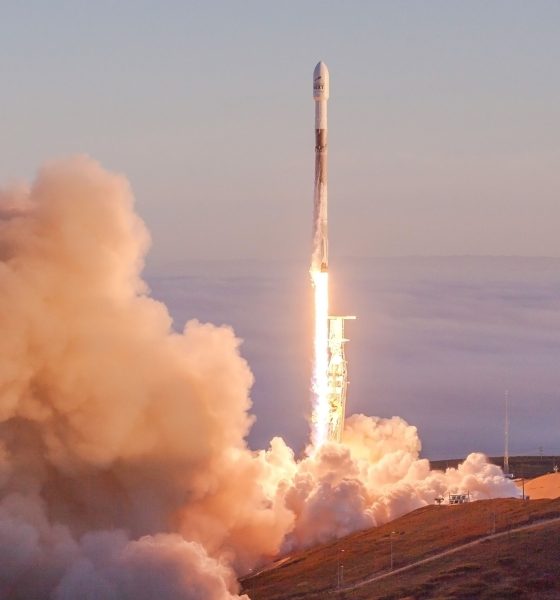
News
SpaceX pushes boundaries of fairing recovery with breathtaking sunrise launch [photos]
SpaceX has soared past the halfway point of completion for Iridium’s next-generation NEXT constellation with the successful launch of satellites 41-50 earlier this morning. SpaceX has three additional launches contracted with Iridium for a total of eight. Despite intentionally ditching the flight-proven first stage booster in the Pacific Ocean, SpaceX attempted to recover one half of the payload fairing; an effort acknowledged to be predominately experimental at this point.
- F9 B1041 gives one final swan song with the successful launch of 10 more Iridium NEXT satellites. (Pauline Acalin)
- Although fog and camera difficulties slightly marred the shot, note the details in Falcon 9’s normally white-hot exhaust. (Pauline Acalin)
- Falcon 9 1041 rises above a sea of fog for one last mission to orbit. Half of its fairing made a surprise appearance in port on Saturday. (Pauline Acalin)
Iridium-5 continues a recent trend of monthly launches out of SpaceX’s Vandenberg Air Force Base launch facilities – the company’s SLC-4E pad is known to take a bit longer than its East coast brethren for refurbishment and repairs between launches, typically maxing out approximately one launch per month. This launch also marks another flight-proven booster intentionally expended, likely in part because the West Coast drone ship Just Read The Instructions is currently out of commission, awaiting the delivery of critical subsystems stripped to repair the Eastern OCISLY.
As of posting, all 10 Iridium NEXT satellites have been successfully deployed into low Earth orbit, marking the successful completion of this mission. On the recovery side of the mission, SpaceX CEO Elon Musk had initially teased Mr Steven’s upcoming fairing catch attempt – his silence since providing a T-0 around 7:44 am PST presumably speaks to the experimental nature of these fairing recovery efforts, and hints that this attempt may not have been successful.
GPS guided parafoil twisted, so fairing impacted water at high speed. Air wake from fairing messing w parafoil steering. Doing helo drop tests in next few weeks to solve.
— Elon Musk (@elonmusk) March 30, 2018
A couple hours after launch, Musk took to Twitter to confirm that this fairing recovery effort had failed, largely due to the complexity of safely parafoiling such a large, fast, and ungainly object. “[Helicopter] drop tests” are planned for coming weeks in order to put to bed the problems ailing fairing recovery. As SpaceX announcer and materials engineer Michael Hammersley noted, “the ultimate goal is full recovery and reuse of the entire vehicle,” and experimental fairing recovery efforts push SpaceX one step closer to that ambition.
- F9 B1041 arrives in port after its first successful mission, Iridium-3, in October 2017. (Pauline Acalin)
- 1041 flew for its second and final time earlier this morning, sans any landing aboard JRTI. (Pauline Acalin)
- B1041 presumably soft-landed in the Pacific, as did its fairing. (Pauline Acalin)
- RIP. (Pauline Acalin)
Space (regulation) oddity
Perhaps the most unusual feature of this launch was an announcement soon after the webcast began that NOAA (the National Ocean and Atmospheric Administration) apparently restricted SpaceX’s ability to provide live coverage of Falcon 9’s upper stage once in orbit, and the webcast thus ended moments after the second stage Merlin Vacuum engine shut off. By all appearances, this is fairly unprecedented: NOAA is tasked with “licensing…operations of private space-based remote sensing systems” with their Commercial Remote Sensing Regulatory Affairs (CRSRA) branch, but they’ve been quite inept and heavy-handed in their implementation of Earth imaging regulation. Nominally, the purpose of that regulation is to protect sensitive US security facilities and activities from the unblinking eyes of private, orbital imaging satellites, but NOAA has quite transparently exploited its power in ways that create extreme uncertainty and near-insurmountable barriers to entry for prospective commercial Earth-imaging enterprises.
What an absolutely beautiful launch at Vandenberg this morning. Congratulations to SpaceX on another successful mission accomplished! #SpaceX #Iridium5 @Teslarati pic.twitter.com/hsp7H5bv8J
— Pauline Acalin (@w00ki33) March 30, 2018
Presumably, this protects their (and their prime contractors’) vested interest in NOAA’s continuing quasi-monopoly over Earth sciences and weather-related satellite production and operations, a segment of the agency’s budget known to aggressively devour as much of NOAA’s budget as practicable. In this sense, something as arbitrary as preventing a launch provider like SpaceX from showing live, low-resolution (functionally useless) video feeds from orbit would be thoroughly disappointing, but in no way surprising. In this case, the restriction is comically transparent in its blatant inconsistency: SpaceX has flown more than 50 launches over more than a decade, all of which featured some form of live coverage of the upper stage once in orbit, and none of which NOAA objected to. Fingers crossed that this absurd restriction can be lifted sooner than later.
- No fairing snack for Mr Steven this time around. (Pauline Acalin)
- PAZ’s recovered fairing half sadly cracked beyond repair while being hauled aboard Mr Steven. (Pauline Acalin)
Follow us for live updates, behind-the-scenes sneak peeks, and a sea of beautiful photos from our East and West coast photographers.
Teslarati – Instagram – Twitter
Tom Cross – Twitter
Pauline Acalin – Twitter
Eric Ralph – Twitter

News
Tesla FSD fleet is nearing 7 billion total miles, including 2.5 billion city miles
As can be seen on Tesla’s official FSD webpage, vehicles equipped with the system have now navigated over 6.99 billion miles.

Tesla’s Full Self-Driving (Supervised) fleet is closing in on almost 7 billion total miles driven, as per data posted by the company on its official FSD webpage.
These figures hint at the massive scale of data fueling Tesla’s rapid FSD improvements, which have been quite notable as of late.
FSD mileage milestones
As can be seen on Tesla’s official FSD webpage, vehicles equipped with the system have now navigated over 6.99 billion miles. Tesla owner and avid FSD tester Whole Mars Catalog also shared a screenshot indicating that from the nearly 7 billion miles traveled by the FSD fleet, more than 2.5 billion miles were driven inside cities.
City miles are particularly valuable for complex urban scenarios like unprotected turns, pedestrian interactions, and traffic lights. This is also the difference-maker for FSD, as only complex solutions, such as Waymo’s self-driving taxis, operate similarly on inner-city streets. And even then, incidents such as the San Francisco blackouts have proven challenging for sensor-rich vehicles like Waymos.
Tesla’s data edge
Tesla has a number of advantages in the autonomous vehicle sector, one of which is the size of its fleet and the number of vehicles training FSD on real-world roads. Tesla’s nearly 7 billion FSD miles then allow the company to roll out updates that make its vehicles behave like they are being driven by experienced drivers, even if they are operating on their own.
So notable are Tesla’s improvements to FSD that NVIDIA Director of Robotics Jim Fan, after experiencing FSD v14, noted that the system is the first AI that passes what he described as a “Physical Turing Test.”
“Despite knowing exactly how robot learning works, I still find it magical watching the steering wheel turn by itself. First it feels surreal, next it becomes routine. Then, like the smartphone, taking it away actively hurts. This is how humanity gets rewired and glued to god-like technologies,” Fan wrote in a post on X.
News
Tesla starts showing how FSD will change lives in Europe
Local officials tested the system on narrow country roads and were impressed by FSD’s smooth, human-like driving, with some calling the service a game-changer for everyday life in areas that are far from urban centers.

Tesla has launched Europe’s first public shuttle service using Full Self-Driving (Supervised) in the rural Eifelkreis Bitburg-Prüm region of Germany, demonstrating how the technology can restore independence and mobility for people who struggle with limited transport options.
Local officials tested the system on narrow country roads and were impressed by FSD’s smooth, human-like driving, with some calling the service a game-changer for everyday life in areas that are far from urban centers.
Officials see real impact on rural residents
Arzfeld Mayor Johannes Kuhl and District Administrator Andreas Kruppert personally tested the Tesla shuttle service. This allowed them to see just how well FSD navigated winding lanes and rural roads confidently. Kruppert said, “Autonomous driving sounds like science fiction to many, but we simply see here that it works totally well in rural regions too.” Kuhl, for his part, also noted that FSD “feels like a very experienced driver.”
The pilot complements the area’s “Citizen Bus” program, which provides on-demand rides for elderly residents who can no longer drive themselves. Tesla Europe shared a video of a demonstration of the service, highlighting how FSD gives people their freedom back, even in places where public transport is not as prevalent.
What the Ministry for Economic Affairs and Transport says
Rhineland-Palatinate’s Minister Daniela Schmitt supported the project, praising the collaboration that made this “first of its kind in Europe” possible. As per the ministry, the rural rollout for the service shows FSD’s potential beyond major cities, and it delivers tangible benefits like grocery runs, doctor visits, and social connections for isolated residents.
“Reliable and flexible mobility is especially vital in rural areas. With the launch of a shuttle service using self-driving vehicles (FSD supervised) by Tesla in the Eifelkreis Bitburg-Prüm, an innovative pilot project is now getting underway that complements local community bus services. It is the first project of its kind in Europe.
“The result is a real gain for rural mobility: greater accessibility, more flexibility and tangible benefits for everyday life. A strong signal for innovation, cooperation and future-oriented mobility beyond urban centers,” the ministry wrote in a LinkedIn post.
News
Tesla China quietly posts Robotaxi-related job listing
Tesla China is currently seeking a Low Voltage Electrical Engineer to work on circuit board design for the company’s autonomous vehicles.

Tesla has posted a new job listing in Shanghai explicitly tied to its Robotaxi program, fueling speculation that the company is preparing to launch its dedicated autonomous ride-hailing service in China.
As noted in the listing, Tesla China is currently seeking a Low Voltage Electrical Engineer to work on circuit board design for the company’s autonomous vehicles.
Robotaxi-specific role
The listing, which was shared on social media platform X by industry watcher @tslaming, suggested that Tesla China is looking to fill the role urgently. The job listing itself specifically mentions that the person hired for the role will be working on the Low Voltage Hardware team, which would design the circuit boards that would serve as the nervous system of the Robotaxi.
Key tasks for the role, as indicated in the job listing, include collaboration with PCB layout, firmware, mechanical, program management, and validation teams, among other responsibilities. The role is based in Shanghai.
China Robotaxi launch
China represents a massive potential market for robotaxis, with its dense urban centers and supportive policies in select cities. Tesla has limited permission to roll out FSD in the country, though despite this, its vehicles have been hailed as among the best in the market when it comes to autonomous features. So far, at least, it appears that China supports Tesla’s FSD and Robotaxi rollout.
This was hinted at in November, when Tesla brought the Cybercab to the 8th China International Import Expo (CIIE) in Shanghai, marking the first time that the autonomous two-seater was brought to the Asia-Pacific region. The vehicle, despite not having a release date in China, received a significant amount of interest among the event’s attendees.
